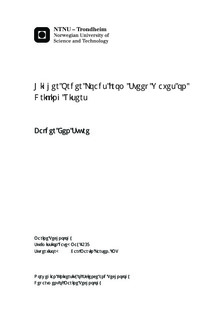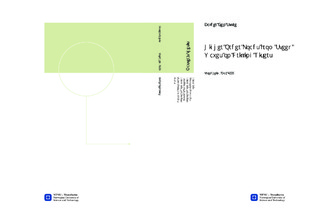| dc.description.abstract | Drilling operations are conducted in increasingly harsher environments as the easily accessible oil fields are growing scarce. Marine drilling risers are exposed to large hydrodynamic forces in the splash zone. Higher order hydrodynamic forces known as slamming loads can occur during especially severe sea states, as steep waves impact with offshore structures. These loads are of concern to the industry, because these loads may lead to structural vibrations. The upper part of the riser and the heave compensation system are especially exposed to slamming loads. The hydraulic cylinders of the compensation system are pretensioned and have short natural periods, and are of special concern with regard to short duration forces such as slamming.This thesis will investigate the significance of including slamming loads in the general load model for marine riser analysis. Riflex is a purpose-made computer simulation program to perform such marine riser analysis. Hydrodynamic loads from waves, formulated by Morison's equation, and current forces are included in the load model of Riflex. In order to include slamming loads in the simulation, a separate load file must be created and added to the load procedure of the program.A slamming load model is developed in Matlab. The model is intended to reproduce the irregular sea elevation extracted from Riflex and formulate the resulting load as a wave impacts against the riser. A load file is produced and implemented to the simulation procedure in Riflex. The marine riser analysis is performed both with and without slamming loads incorporated in the load model for comparison reasons. It is vital to synchronize the loading with the wave and vessel motion simulated in Riflex. Extensive information of the Riflex riser model is transferred to the Matlab code, as well as updated position of the riser. Five severe sea states are simulated.The focus of the analysis is primarily on the hydraulic cylinders of the heave compensation system. Time series of the displacements are examined for any dynamic effects from the slamming loads. The displacements are found to be close to similar with and without slamming forces. Occasionally slightly higher amplitudes are observed as the slamming loads act on the riser, but the standard deviations of the displacements reveal small differences. The largest differences manifest themselves in the sea states with the steepest waves. The response spectra both with and without slamming show no evidence of response in different frequency ranges.The bending moments on the hydraulic cylinder are found to have higher amplitude oscillations in the case of large slamming loads. The differences in the bending moments standard deviation are slightly higher than for the displacements. At most, the largest observed maximum bending moments increase 27.39 %. At the least, 1.85 %.The influence slamming loads have on fatigue life is also investigated. The accumulated damage was calculated with Miner-Palmgren summation, utilizing the rainflow counting technique to count stress cycles. The number of small stress amplitude cycles increase for all sea states when slamming is included. In addition there is a small increase of high stress amplitude cycles. This leads to a relatively large effect on accumulated damage. At most, the damage is increased with 133.67 %.The effects of slamming loads are in this thesis found to coincide poorly with previous work on the matter. The differences most likely lie in the differences in approximations, especially with regards to wave kinematics. Linear wave theory is not well suited to deal with slamming loads, and higher order theories are most likely needed to describe the kinematics in steep waves properly. On the basis of this thesis, it does not appear relevant to include slamming loads in the general load model in marine riser analysis. | nb_NO |

